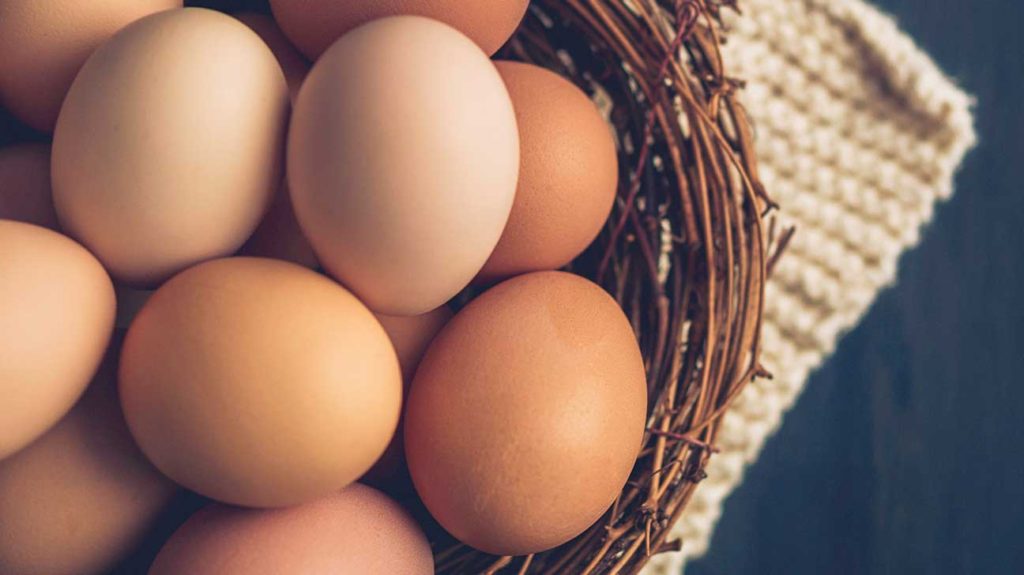
Whether you are cooking and baking at home or you are a food and beverage manufacturer, home recipes and commercial formulations that call for eggs often use egg replacers. This can be for a variety of reasons, such as:
- Food allergies
- Vegan diet
- Low/no cholesterol
- Lower cost
- Greater shelf stability
- Support a clean label
- Avoid egg bacterial pathogens like salmonella
Egg replacers can mimic much of what eggs lend to a recipe, such as:
- Taste
- Texture and Consistency
- Quality
- Appearance
- Binding
- Leavening
- Moisture
- Flavor
Here are just some of the replacements for eggs
- Flaxseed meal – 1 egg ≈ 1 tablespoon ground flaxseeds mixed with 2 to 3 tablespoons water
- Chia Seeds – 1 egg ≈ 1 tablespoon chia seeds mixed with 2 to 3 tablespoons water
- Mashed Banana – 1 egg ≈ ¼ cup mashed banana
- Applesauce – 1 egg ≈ ¼ cup applesauce
- Silken Tofu – 1 egg ≈ ¼ cup blended silken tofu
- Aquafaba – 1 egg ≈ 3 tablespoons aquafaba
- Starches – 1 egg ≈ 2 tablespoons arrowroot powder, cornstarch, potato starch, or tapioca starch mixed with 3 tablespoons water or 1 tablespoon agar mixed with 1 tablespoon water as a mock egg white or 2 tablespoons of arrowroot powder and 3 tablespoons of water
- Vinegar & Baking Powder – 1 egg ≈1 teaspoon baking soda and 1 tablespoon of vinegar
- Yogurt or Buttermilk – 1 egg ≈ ¼ cup of yogurt or buttermilk
- Nut Butter- 1 egg ≈ 3 tablespoons of peanut, cashew or almond butter
- Carbonated Water – 1 egg ≈ ¼ cup of carbonated water provides moisture and leavening
- Agar-Agar or Gelatin – 1 egg ≈ dissolve 1 tablespoon (about 9 grams) of unflavored gelatin in 1 tablespoon (15 grams) of cold water. Then, mix in 2 tablespoons (30 grams) of boiling water until frothy. Alternatively, you can use 1 tablespoon (9 grams) of agar-agar powder mixed with 1 tablespoon (15 grams) of water to replace one egg.
- Soy Lecithin – 1 egg ≈ 1 tablespoon
- Commercial Replacers – such as Energ-G, Orgran, or Bob’s Red Mill
And if you need just egg yolks or whites:
- Egg whites: Aquafaba is the best option. 1 egg ≈ 3 tablespoons (45 grams) for each egg white you want to replace.
- Egg yolks: Soy lecithin is a great substitute. 1 egg ≈ 1 tablespoon (14 grams).
The trick here is that each of these replacers has some of its own qualities as well, so each will be best suited for certain types of recipes. Here are a few examples:
- Pancakes -mashed banana, applesauce, aquafaba, or commercial replacers.
- Brownies – mashed banana, applesauce, or commercial replacers.
- Meatloaf – Flaxseed meal, chia seeds, aquafaba, silken tofu, or commercial replacers.
- Tofu Breakfast Scramble – Turmeric adds sunny color, Dijon mustard and nutritional yeast add savoriness, and tahini adds richness. (Tempeh bacon on the side, highly encouraged.)
It is not uncommon for some recipes or formulations to use a combination of eggs and an egg replacer. Some commercial egg replacement powders are so effective that they can replace up to 100% of egg use in a wide variety of applications. Applications include cookies, doughnuts, cakes, biscuits, scones, cornbread, muffins, pancakes, waffles, béarnaise and hollandaise sauces, mayonnaise & salad dressings, confectionery nougat and more.
While an egg replacer can be a valuable staple for every kitchen, there are a few things it can’t be used for. Egg replacers will not work to make items like scrambled eggs or omelets. Egg replacers are typically meant to be used in recipes and as a binding agent. Eating them on their own, as an egg replacement is less than appetizing. Here are some factors that may make real eggs a necessity in your recipe or formulation:
- Emulsification
- Aeration
- Coagulation
- Humectancy
I hope this information offers you greater flexibility in your own kitchen and gives you greater insight into the purpose of at least some of the ingredients you may see on the label of processed foods.